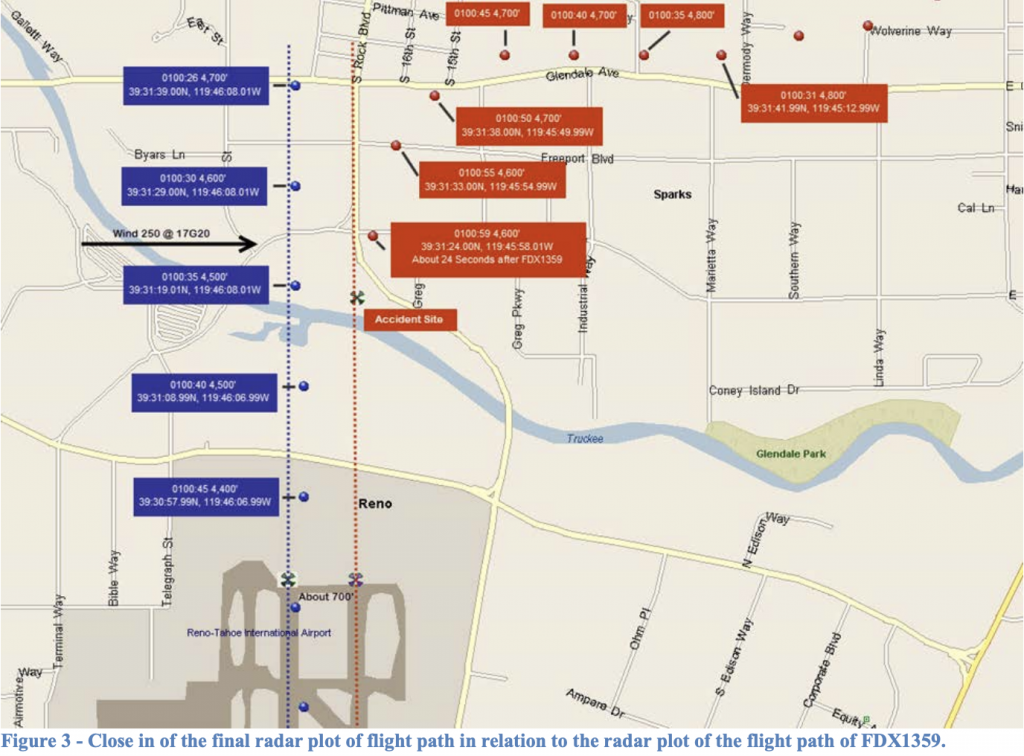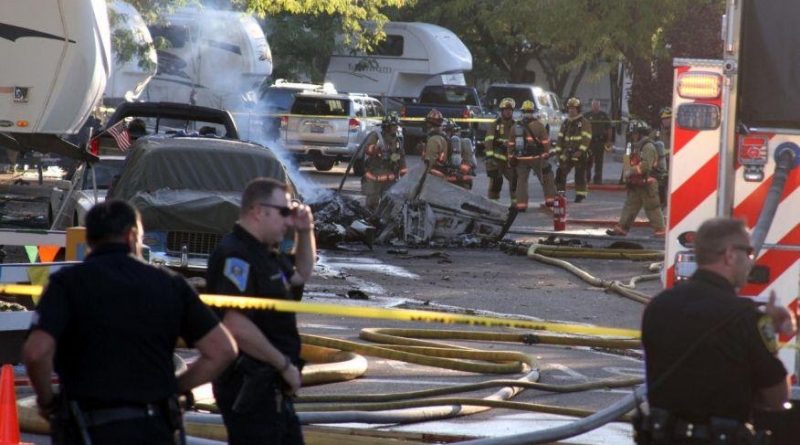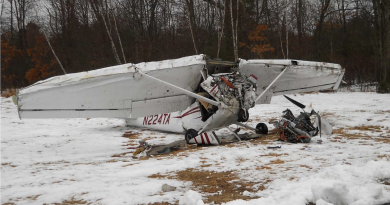Bonanza A36 crashes due to Wake Turbulence

Location:
- Near Reno-Tahoe International Airport, Nevada
Aircraft:
- 1981 Beechcraft Bonanza A36
Pilot:
- 73 years old
- Over 11,300 hours of flight time
- Holds instrument, commercial, and flight instructor ratings.
Weather:
- Few clouds around 10,000 AGL
- Visibility greater than 10 miles
- Winds out of the west at 17, gusting 20 knots.
THE INCIDENT
Shortly before 6 PM, upon approaching the airport in his Beechcraft Bonanza A36, the pilot was told by ATC to expect runway 25 for landing. After the controller informed him that there was a delay for that runway, the pilot stated he could accept 16L. The controller instructed the pilot to proceed; but did not specify the runway in his response.
Once the pilot made contact with Reno-Tahoe Tower, the controller instructed the pilot to continue for Runway 25; at which point the pilot reported he was on Downwind for 16L. Instead of correcting the pilot, the controller acknowledged the transmission and instructed him to continue inbound for 16L.
During this time, the parallel runway 16R was being used by two Boeing 757’s, in sequence to land, separated by about 7 miles. The controller advised the Bonanza pilot that there was a B757 on a 9-mile final for 16R, cautioned him about the wake turbulence, and cleared him to land. The Bonanza pilot reported having “the airliner” in sight.
Shortly after clearing the Bonanza to land, the controller issued an all-aircraft advisory that the winds were now from 250 at 17 gusting 20 knots. Although these wind conditions met or exceeded the Bonanza’s maximum demonstrated crosswind ability for the specified landing runway, the pilot continued the approach.
70 seconds after the Bonanza pilot called traffic in sight, just after turning the aircraft onto base leg for 16L, the second B757 passed approximately 1 mile ahead and 100 feet below the Bonanza.
As the Bonanza pilot was on about a 1/2 mile approach, at about 200 ft, witnesses reported that the aircraft suddenly rolled and descended into the ground. Debris and ground scars were consistent with an aircraft making a near-vertical descent and impact.

NTSB PROBABLE CAUSE FINDINGS
- The pilot’s selection of a landing runway which, given the wind and traffic conditions, was susceptible to high crosswinds and the translation of wake turbulence across its approach path.
- The controller’s and pilot’s failure to ensure separation from the B757 and its wake, which resulted in a low-altitude encounter with wake vortices that the pilot was unable to recover from.
HOW COULD THIS ACCIDENT HAVE BEEN AVOIDED?
- Fatigue was a big issue here. The pilot was completing his last leg, and had already flown over 900 miles that day. Fatigue may have influenced the following:
- Accuracy of communication with ATC – It is likely that, due to the pilot’s attention being focused on the runway for the approach, he identified the first B757 in sequence, which was on short final, instead of the second B757 which was approximately 5 miles from the Bonanza’s two to three o’clock position, according to the NTSB.
- Monitoring for other aircraft – It is not known whether the pilot saw the second B757 or not, but no communication or flight path adjustments were made by the Bonanza pilot that would indicate he saw the aircraft.
- Decision making & judgement – The pilot decided to continue the approach even though the crosswind component exceeded the demonstrated ability of his aircraft.
- Weather & Traffic Separation – It is both the responsibility of the controller and the pilot to ensure appropriate traffic separation. Based on the approach speed and path of both aircraft and the crosswind, there was a high risk of wake turbulence.
CONCLUSION
In closing, this accident could have happened to anyone. After a long day of flying, fatigue sets in and you start to miss things… Such as a portion of an ATC transmission. Judgement starts to lapse and you may make decisions without flight safety being your top priority. Get-there-itis is very real and we’ve probably all seen pilots make decisions based on “getting there quickly” rather than the safest manner in times of fatigue.
Know not only the performance limitations of your aircraft, but your personal piloting ability and familiarity with the aircraft within those parameters. Are you flying a tricycle or tailwheel airplane? When is the last time you landed in a crosswind of this strength? What is the spread between the wind and the gust factor?
Controllers make mistakes, too. Consider the winds and runways in use for all aircraft around the airport. If you don’t like something the controller gives you, declare you are unable and ask for an alternative, in the interest of flight safety.



